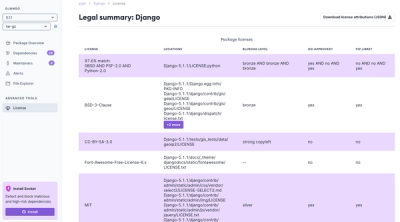
Product
Introducing License Enforcement in Socket
Ensure open-source compliance with Socket’s License Enforcement Beta. Set up your License Policy and secure your software!
Yet another static website generator.
Why choose pidgeotto?
pip install pidgeotto
$ pip install git+https://github.com/niharokz/pidgeotto
By default, pidgeotto will install the below packages from PyPI pip
pyyaml, jinja2, markdown2
$ pidgey init project
To initiate pidgeotto with name "project"
$ pidgey new pageName
To create new page/post/note with name "pageName"
$ pidgey build pageName
To build static pages and keep those in the "public" directory.
showInHome tag is present in each note markdown.
showInHome: True
will create page which are blog/note post.
``` showInHome: False ```
will create page which are pages.
config.yml is extensible.
For example, if you want to add favicon.ico. Keep favicon in the resource folder.
favicon: resource/favicon.ico
in config.yml
In template, add {{ config.get('favicon') }}.
Extra metadata per page.
If you want to add some metadata to your page, it can be done using the below command on the markdown page.
meta : '<link rel="stylesheet" type="text/css" href="/extra.css" />
pidgeotto_project
├── public
├── config.yml
├── content
│ ├── header.md
│ ├── footer.md
│ ├── home.md
│ ├── archive.md
│ └── note
│ └── other_pages.md
├── resource
└── templates
├── home_template.html
├── note_template.html
└── rss_template.xml
Below are examples of sites running via pidgeotto.
FAQs
Yet another static blog generator.
We found that pidgeotto demonstrated a healthy version release cadence and project activity because the last version was released less than a year ago. It has 1 open source maintainer collaborating on the project.
Did you know?

Socket for GitHub automatically highlights issues in each pull request and monitors the health of all your open source dependencies. Discover the contents of your packages and block harmful activity before you install or update your dependencies.

Product
Ensure open-source compliance with Socket’s License Enforcement Beta. Set up your License Policy and secure your software!

Product
We're launching a new set of license analysis and compliance features for analyzing, managing, and complying with licenses across a range of supported languages and ecosystems.

Product
We're excited to introduce Socket Optimize, a powerful CLI command to secure open source dependencies with tested, optimized package overrides.